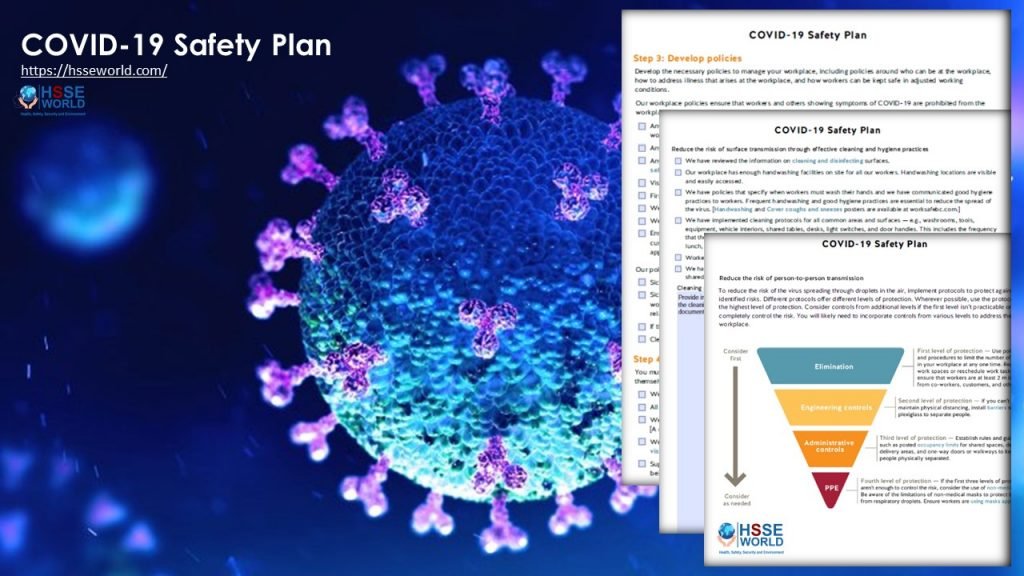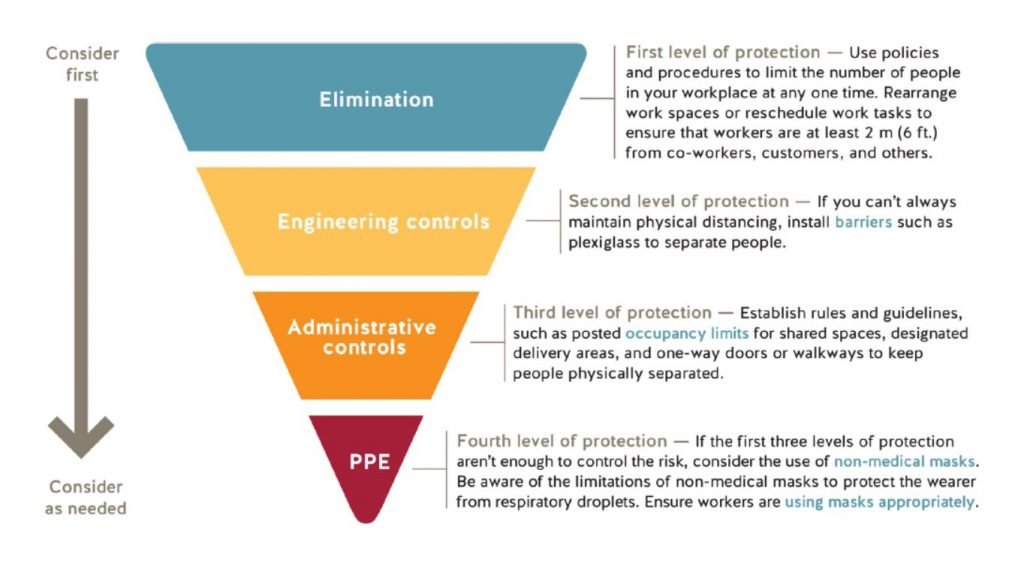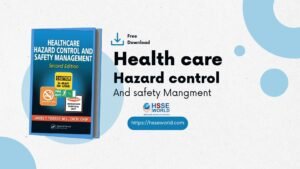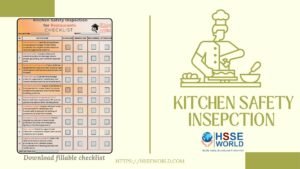Safety Templates: COVID-19 Safety Plan
3 min readEmployers are required to develop a COVID-19 Safety Plan that outlines the policies, guidelines, and procedures they have put in place to reduce the risk of COVID-19 transmission. This tool will guide you through a six-step process to help you create your plan. The tool is provided as a fillable PDF you can download and save with the details of the plan for your workplace.


Step 1: Assess the risks at your workplace
The virus that causes COVID-19 spreads in several ways. It can spread in droplets when a person coughs or sneezes. It can also spread if you touch a contaminated surface and then touch your face.
The risk of person-to-person transmission increases the closer you come to other people, the more time you spend near them, and the more people you come near.
The risk of surface transmission increases when many people contact the same surface and when those contacts happen over short periods of time.
Involve workers when assessing your workplace
Identify areas where there may be risks, either through close physical proximity or through contaminated surfaces. The closer together workers are and the longer they are close to each other, the greater the risk.
- We have involved frontline workers, supervisors, and the joint health and safety committee (or worker health and safety representative, if applicable).
- We have identified areas where people gather, such as break rooms, production lines, and meeting rooms.
- We have identified job tasks and processes where workers are close to one another or members of the public. This can occur in your workplace, in worker vehicles, or at other work locations (if your workers travel offsite as part of their jobs).
- We have identified the tools, machinery, and equipment that workers share while working.
- We have identified surfaces that people touch often, such as doorknobs, elevator buttons, and light switches.
Step 2: Implement protocols to reduce the risks
Select and implement protocols to minimize the risks of transmission. Look to the following for information,
input, and guidance:
- Review industry-specific protocols on worksafebc.com to determine whether any are relevant to your industry.
- Guidance for additional sectors will be posted as they become available. If protocols are developed specifically to your sector, implement these to the extent that they are applicable to the risks at your workplace. You may need to identify and implement additional protocols if the posted protocols don’t address all the risks to your workers.
- Frontline workers, supervisors, and the joint health and safety committee (or worker representative).
- Orders, guidance, and notices issued by the provincial health officer and relevant to your industry.
- Your health and safety association or other professional and industry associations.
Reduce the risk of person-to-person transmission To reduce the risk of the virus spreading through droplets in the air, implement protocols to protect against your identified risks. Different protocols offer different levels of protection. Wherever possible, use the protocol that offers the highest level of protection. Consider controls from additional levels if the first level isn’t practicable or does not completely control the risk. You will likely need to incorporate controls from various levels to address the risk at your workplace.


Download to complete Reading
More Templates
- Sample of Accident Prevention Program ( APP) Template for General Industry Free Download
- Sample Written Program For Fire Prevention Plan
- Templates: HSE Incentives and rewards
- Simultaneous Operation (SIMOPS) checklist
- Temporary Construction Facilities (TCF) Inspection checklist
- HIRA, HSE Hazards & Effects Management Process (HEMP) & Risk Register Template
- Hazard Identification Plan (HIP) Template
- Construction Site Traffic Management Plan (CSTMP) Guidance
- Safety Templates: COVID-19 Safety Plan
- Templates: Management of Change NEW Modified Equipment Safety Checklist
- Templates:Machine Guarding
- Templates:Fire Sprinkler Maintenance Program
- Templates:Overhead and Gantry Cranes Program
- Templates:Respiratory Protection Program
- Templates: Bloodborne Pathogens and BBP Exposure Control Plan
- Templates:Safety Compliance Assessment Process Blank
- Templates:Ergonomics Program and Ergonomic Assessment Tool
- Templates:Process ٍSafety Management Program
- Templates:Hot Work ٍSafety Program
- Templates:Machine Safeguarding Program
- Templates:Hearing Conservation Program
- Templates:Road Safety Plan
- Templates:Personal Protective Equipment Program
- Templates:Hazard Communication Program
- Templates:Emergency Action Plan
- Templates:Electrical Safety Program
- Templates:Confined Space Program
- Templates:Accident Investigation Program



